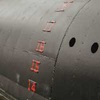![Postcard depicting a painting of the mutineers turning Lieutenant Bligh adrift from the Bounty, before 1816, ANMM Collection Gift from Rhonda Coleman, ANMS1140[037] Postcard depicting a painting of the mutineers turning Lieutenant Bligh adrift from the Bounty, before 1816, ANMM Collection Gift from Rhonda Coleman, ANMS1140[037]](/-/media/anmm/images/blog-content/2019/06-jun-2019/mutiny-on-the-bounty_2160x1080.jpg?h=960&la=en&mw=1920&w=1920)
What happened to Fletcher Christian and the mutineers?
The Bounty's mission was to sail from England to Tahiti, where the expedition’s gardeners would collect young breadfruit plants to take to Britain’s colonies in the West Indies, where it was hoped they would become a staple food for the slaves working on the sugar plantations. The ship had been delayed in its voyage out and arrived at Tahiti at a time when the breadfruit plants were not ready to cultivate. As a result, Bligh was forced to wait five months before the plants were collected and the ship ready to leave – long months during which discipline on board lapsed. Three weeks after leaving Tahiti, some of the crew mutinied and took over the ship.
Bounty's mission was to transport breadfruit plants from Tahiti to British sugar plantations in the Caribbean to provide food for slave
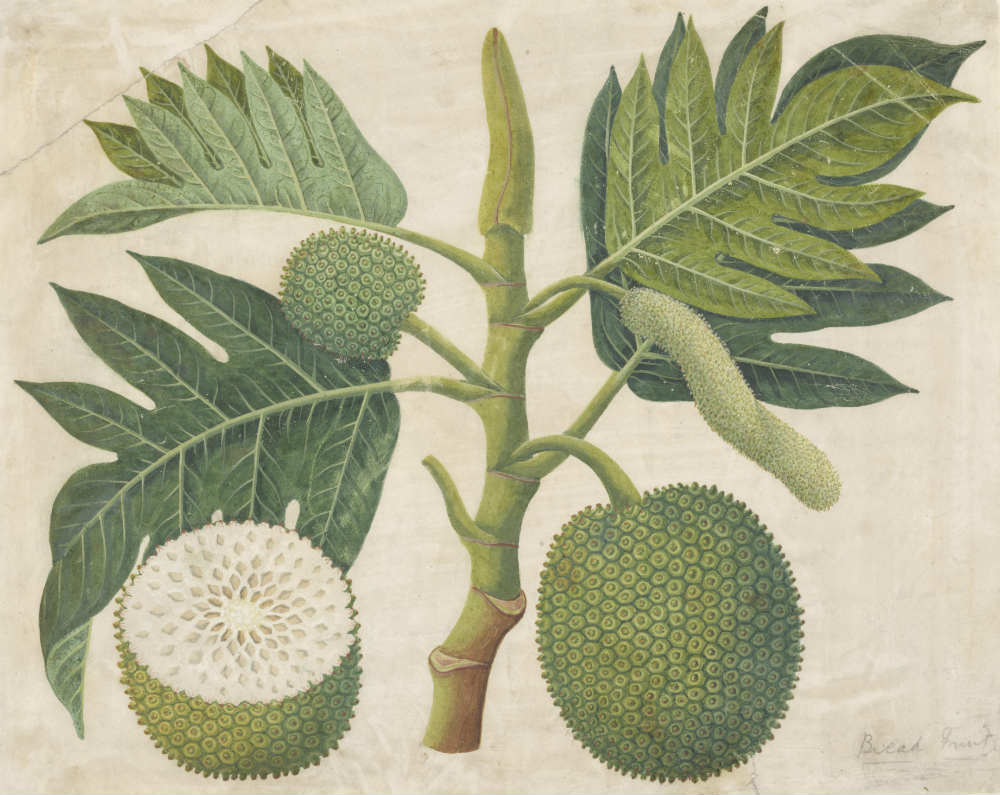
Breadfruit (Artocarpus incisa), Rex Nan Kivell Collection, National Library of Australia, nla.obj-135498865
The mutiny occurred in the early hours of 28 April 1789, when Fletcher Christian (acting lieutenant and officer of the watch on duty) and other crew members armed themselves and, breaking into the captain’s cabin, woke and arrested Bligh. In the hours that followed, Bligh and 18 loyal followers were forced into Bounty’s seven-metre launch and set adrift, while Christian and the other 24 mutineers remained aboard the ship.
The mutiny happened very quickly and apparently without warning, and although there was a hard core of mutineers centred about Christian, others had simply found themselves unwittingly swept up in events.
In a remarkable feat of seamanship, Bligh and the men in the open boat survived a six-week voyage to finally arrive at the Dutch settlement of Coupang on the island of Timor. After recuperating and making their way to Batavia (now Jakarta), Bligh and the surviving men ultimately made their way back to England. But what happened to Fletcher Christian and the Bounty mutineers?
At the time of the mutiny, Bounty was in sight of the volcanic island of Tofua, about 2,700 kilometres west of Tahiti, where many of the mutineers had established relationships with Polynesian women. The mutineers knew, however, that sooner or later the Royal Navy would come searching for them, and Tahiti would be the first place they looked.
Our knowledge of this part of the story is based on the account written by mutineer James Morrison, bosun’s mate aboard Bounty, and an observant and capable writer. Looking through Bligh’s books left on board, Fletcher Christian found a reference to Captain Cook’s discovery of the island of Tubuai, some 640 kilometres south of Tahiti, and it was there that he took the ship, arriving a month after the mutiny.
At Tubuai, the mutineers found the indigenous inhabitants unwelcoming. Despite this, Christian thought it was a suitable place to establish a permanent settlement. He determined that after a brief stay, they would sail to Tahiti to get animals and supplies, and to bring their Polynesian former partners and friends back to the island.
Ultimately the attempt to settle on Tubuai lasted just two and a half months, and in the face of escalating armed opposition to their presence and deteriorating mutineer morale, Christian agreed to return to Tahiti, where he allowed those who wished to leave the ship to do so. Sixteen mutineers chose to go ashore; nine (including Fletcher Christian) remained with the Bounty. The ship remained at Matavai Bay for a day while the men’s sea chests, hammocks and a proportion of the arms, ammunition and other supplies were shared out and taken ashore in the only remaining serviceable boat.
In the early hours of the morning, when the Bounty left Tahiti for the last time, there were some 26 Polynesians aboard in addition to the nine mutineers, but this number was reduced when one woman chose to jump overboard and swim ashore, and when some of the older women were transferred to a passing canoe. With the departure of the ship, all trace of Fletcher Christian and his followers disappeared. Not until 1808 – 19 years later – was the mystery of what happened to them finally solved.
The mutineers who stayed at Tahiti, were, as anticipated, hunted by the Royal Navy. In March 1791, the frigate HMS Pandora dropped anchor in Matavai Bay and soon sent armed parties ashore to find the Bounty men. Of the 16 who had landed from the Bounty, two had since been murdered.
Having completed part of his orders by capturing the mutineers living at Tahiti, Pandora’s commander, Captain Edwards, next aimed to find Fletcher Christian and the Bounty, and so he headed west across the Pacific, searching the islands for any sign or word of the mutineers.
But he was searching in the wrong direction, steadily putting more and more miles between his ship and the mutineers, and drawing ever closer to the great and hazardous barrier reefs that protect the north-east coast of Australia.
Hearing that the navy had sent Pandora to the Pacific, Bligh had predicted that Captain Edwards would never find his way through Endeavour Strait. His words proved prophetic when, after months of unsuccessful searching, HMS Pandora was wrecked on a reef off the Australian coast, in August 1791.
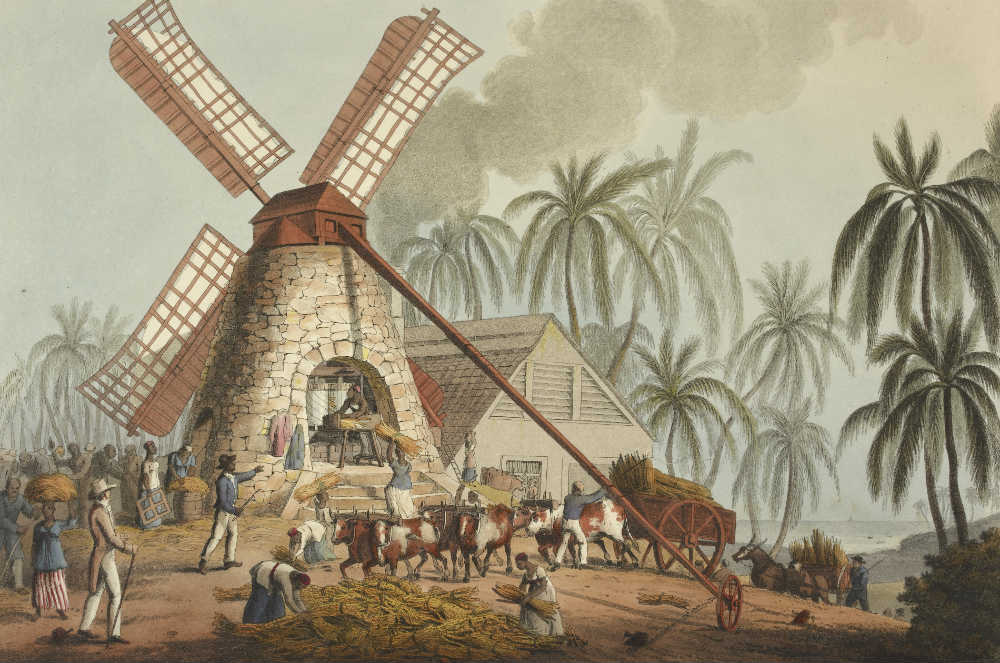
A highly sanitised view of life on a British sugar plantation, from Ten views in the island of Antigua, William Clark, London, 1823. © 2010 The British Library Board
Four mutineers and 31 of Pandora’s crew were drowned in the wreck. Like Bligh more than two years earlier, Captain Edwards and his people were forced to take to open boats and make their way to Coupang.
The ten surviving Bounty prisoners eventually returned to England where, at a court martial in April 1792, four were acquitted and six were found guilty and sentenced to death. Only three were actually executed; two received the king’s pardon; and another was discharged due to a procedural error.
Of the two men who received the king’s pardon, midshipman Peter Heywood benefited greatly from his influential family connections. Fletcher Christian’s family was also influential. Although unable to deny his role as the instigator of the mutiny aboard the Bounty, they worked hard to suggest that Bligh’s constant abuse of the officers and crew had ultimately driven Fletcher Christian to mutiny. Edward Christian, Fletcher’s elder brother and a barrister, did this by publishing the minutes of the court martial’s proceedings with an appendix containing ‘A full account of the real causes and circumstances of that unhappy Transaction, the most material of which have been hitherto withheld from the Public’.
At the time of the court martial, Bligh was at sea in command of a second expedition to bring breadfruit to the West Indies and was therefore unable to defend himself against Edward Christian’s publication and the damage it did to his reputation. He must have received reports, but not until he returned to England did Bligh fully appreciate how much public sentiment had shifted against him.
![Transplanting of the bread-fruit trees from Otaheite [Tahiti], painted and engraved by Thomas Gosse, 1796. National Library of Australia nla.obj-135292190](/-/media/anmm/images/blog-content/2019/06-jun-2019/transplanting-of-the-bread-fruit_1000.jpg?la=en)
Transplanting of the bread-fruit trees from Otaheite [Tahiti], painted and engraved by Thomas Gosse, 1796. National Library of Australia nla.obj-135292190
Edward Christian had interviewed several of the mutineers for his damning publication, and after returning to England, William Bligh set about a similar process, gathering supportive affidavits from men who had remained loyal during the mutiny. Some, such as the sailmaker Lawrence Lebogue – who had sailed with Bligh in the West Indian trade and on both the Bounty and Providence breadfruit expeditions – gave their information willingly, but there is also evidence of Bligh’s attempts to manipulate statements.
In a letter to his nephew Francis Godolphin Bond, who had been his first lieutenant aboard the Providence for the second breadfruit voyage, Bligh asked Bond to get Michael Byrne (the almost-blind fiddler aboard the Bounty, who was then serving under Bond) to answer a set of carefully contrived questions calculated to show Bligh in a favourable light.
If he disavows having said anything disrespectful of me to Christian, and affirms, which every man must, that I did all that a good Commander could do, and as you know, I have done; I will be obliged to you to write it down.
When you have arranged what Byrne says, I think it would be well to make him write it himself if he can see well enough.
Throughout the second half of 1794, Bligh gathered material and in December published his rebuttal of Edward Christian’s accusations in ‘Answer to certain Assertions’. In the end he didn’t use Byrne’s statement, but the evidence still surviving in the archives shows the extreme lengths to which he was prepared to go to protect his reputation.
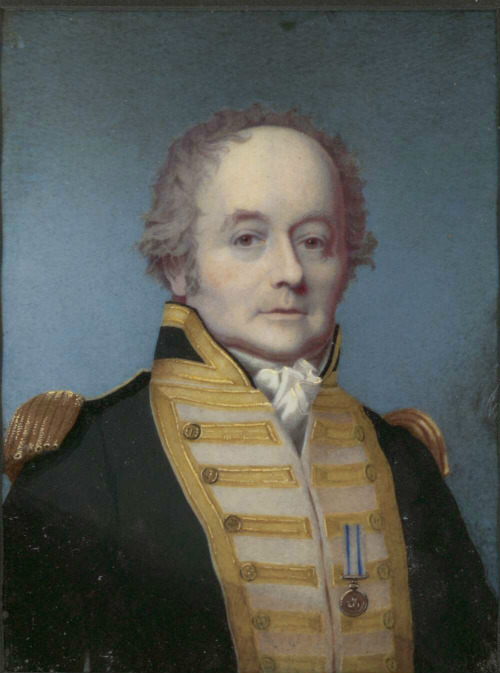
Rear Admiral William Bligh, Alexander Huey, 1814. National Library of Australia nla.obj-136207002
The mutineer settlement at Pitcairn Island
By this time, Fletcher Christian and several other mutineers were dead. When the Bounty had departed from Tahiti for the last time in September 1789, it had sailed south-east, away from the main Society Islands group. The attempt to settle at Tubuai had proved a disaster due to the opposition of the Polynesian inhabitants and now, with far fewer mutineers in his party, Fletcher Christian had resolved to find a remote and uninhabited island to establish a settlement.
After a period of unsuccessful searching – during which they sailed as far west as the Tongan archipelago – once again Bligh’s books left on board provided a possible place to look. In an account of Philip Carteret’s 1767 voyage around the world in HMS Swallow, Christian found a reference to an island that:
… appeared like a great rock rising out of the sea: it was not more than five miles in circumference, and seemed to be uninhabited; It was however, covered with trees, and we saw a small stream of fresh water running down one side of it. I would have landed upon it, but the surf, which at this season broke upon it with great violence, rendered it impossible.
Adding to this promising description, the location of the island – which Carteret had named Pitcairn – seems to have been incorrectly identified through a navigational error, and Captain Cook had failed to find it on either his second or third voyage.
Reasoning that Carteret had made an error in calculating his longitude, but that the latitude he recorded for Pitcairn was probably correct, Fletcher Christian took the ship to that latitude and sailed east until finally sighting the island in January 1790. A search of the island showed that it was indeed uninhabited and had fresh water, good soil and lush vegetation. Very soon the mutineers started to take ashore everything from the ship that they thought they might need.
Apart from the nine mutineers (Fletcher Christian, Edward Young, John Mills, Isaac Martin, William Brown, William McCoy, John Adams and John Williams), there were five Polynesian men, one boy, 12 women and a baby girl aboard when the Bounty arrived at Pitcairn. However unlikely, these 28 were to form a settlement that continues to the present day.
As Carteret had thought, there was no secure anchorage at Pitcairn, and after removing all they wanted from the ship, the mutineers set fire to it, in what is now known as Bounty Bay, to hide all evidence of their existence on the island. In the same manner, when building their houses, they located them behind a screen of vegetation to make them invisible to any ship that might approach the island, and then relied on the rugged coastline to dissuade closer investigation.
Although long uninhabited, there were ample signs of earlier Polynesians living on the island, and the new settlers soon discovered rock carvings, a morai and a site where stone for tools had been quarried, as well as many food plants typically cultivated by Polynesians.
In establishing the settlement, the mutineers divided the island among themselves and each European had a Polynesian woman to live with. This arrangement left only three Polynesian women as partners for the six Polynesian men, leading to violent jealousies that were soon exacerbated by the death of mutineer John Williams’ partner, Faahotu.
When Williams took another woman from those living with the Polynesian men, the men decided to kill the Europeans and throw off their servitude. Unfortunately for them, the women warned the mutineers and two of the men were killed, thus establishing a brooding end to the violence.
In 1793, however – just three years after settling on the island – five of the mutineers, including leader Fletcher Christian, were killed when the remaining Polynesian men rose up again. But their victory was short-lived and they in turn were killed.
After these killings, life on the island remained relatively stable until 1799, when mutineer William McCoy suicided by jumping off a cliff into the sea. Later that same year, Edward Young and John Adams killed Matthew Quintal after he threatened them and their families. When Edward Young succumbed to an asthma attack in 1800, the mutineer John Adams was left the last man standing, to become the unlikely patriarch of a settlement of women and children.
John Adams was listed on the Bounty muster as Alexander Smith (a common ruse of seamen who had deserted). After the violence of the first decade of settlement, and now finding himself responsible for the community, he turned to religion. Among the books that had been brought to the island he found a prayer book, which he used to instil at least the basic tenets of Christianity into the Pitcairn community.
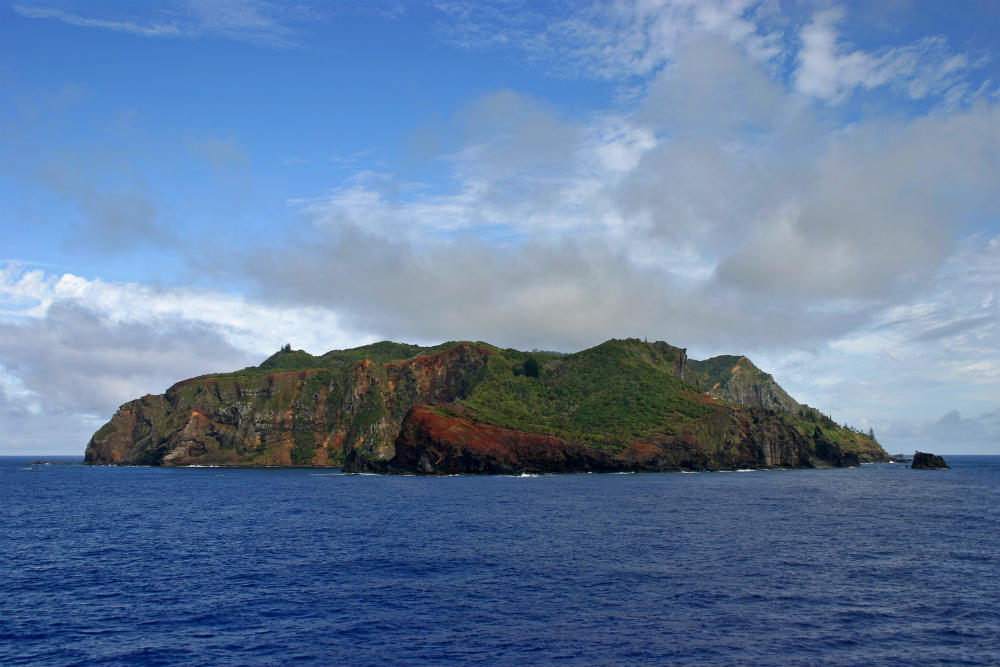
Pitcairn Island from the east. To the left of the image is Bounty Bay, where the ship was deliberately destroyed. © Claude Huot/Shutterstock
Eighteen years after the arrival of the Bounty at Pitcairn, the community’s isolation was at last broken when the American whaleship Topaz happened to stop at the island. Mindful of his mutineer status, Adams remained ashore, but the Topaz’s crew was surprised when a canoe paddled out from the shore carrying several young men, and amazed when they hailed the ship in English! Very soon Topaz’s captain, Mayhew Folger, realised that he had discovered the home of the Bounty mutineers and finally solved the mystery of what happened to Fletcher Christian and the Bounty.
The 19th century and beyond
Located in the middle of the Pacific, Pitcairn gradually became a regular port of call for whalers and other ships during the 19th century. Six years after the Topaz visited, John Adams seemed destined to hang when the British warships Briton and Tagus stopped at the island. Instead, the ships’ commanders allowed him to remain on the island, so impressed were they by the religious influence he held over the community of just over 40, comprising seven of the original women settlers and very young men and women. Adams died on the island in 1829. A few sailors had chosen to join the Pitcairn community before his death and one of these, George Hunn Nobbs, became the island’s leader.
British warships became regular visitors, and over time the Pitcairners looked to the visiting commanders to rule in local disputes, ultimately leading to Pitcairn becoming a Protectorate of Great Britain in 1838. Today Pitcairn is a British Overseas Territory.
By the middle of the 19th century, with the population close to 200 and after a series of droughts had ruined crops, the island’s leaders began looking for a larger place to resettle the community. After discussions with the British authorities, in 1856 the entire population was removed to Norfolk Island.
From its earliest days, Norfolk Island had been a convict settlement, and although the convicts had all been removed before the Pitcairners arrived, the prison infrastructure and other buildings remained fully intact and some of these were soon occupied by Pitcairner families. Today a large percentage of Norfolk Island’s population still traces its history back to Pitcairn.
And what of Pitcairn Island? A few years after the move to Norfolk Island several families chose to return to Pitcairn, establishing the basis of the population that continues to live there. Whereas overpopulation confronted their forefathers, today’s Pitcairn community faces the issues of a dwindling and ageing population, with an ever-decreasing number of islanders available to undertake the routine heavy work of living on a remote island in the Pacific. Only time will tell if they are able to turn things around, but the future is certainly full of challenges.
If you’re intrigued about William Bligh and the Bounty mutineers, visit our upcoming exhibition Bligh – Hero or Villain? launching in July 2019.
Sources:
Bligh to Francis Godolphin Bond, 26 July 1794, reproduced as letter 35 in Mackaness, G, Fresh Light on Bligh – being unpublished correspondence of Captain William Bligh and Lieutenant Francis Godolphin Bond, RN; original manuscript BND/1 in Caird Library, National Maritime Museum, London.
Hawkesworth, J 1773, An Account of the Voyages by Commodore Byron, Captain Wallis, Captain Carteret and Captain Cook, Strahan and Cadell, London, 3 vols.
This article originally appeared in Signals 127 (June 2019), entitled 'A mutiny and a mystery'.
